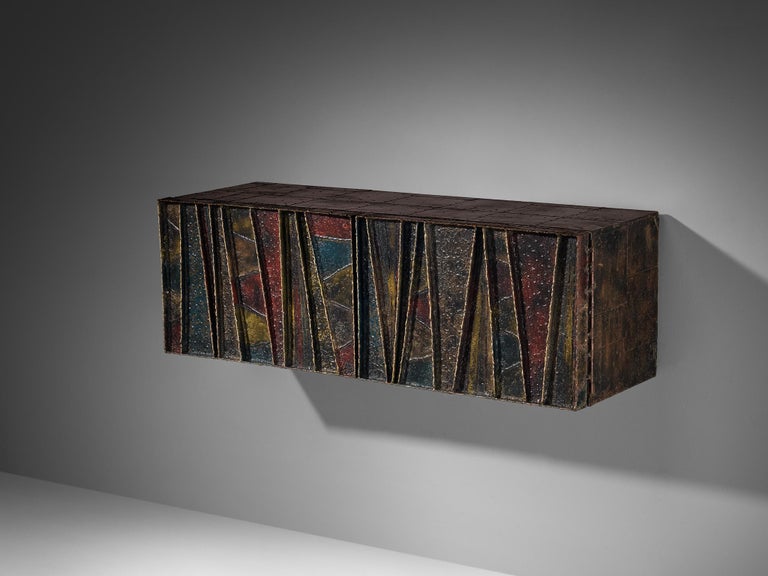
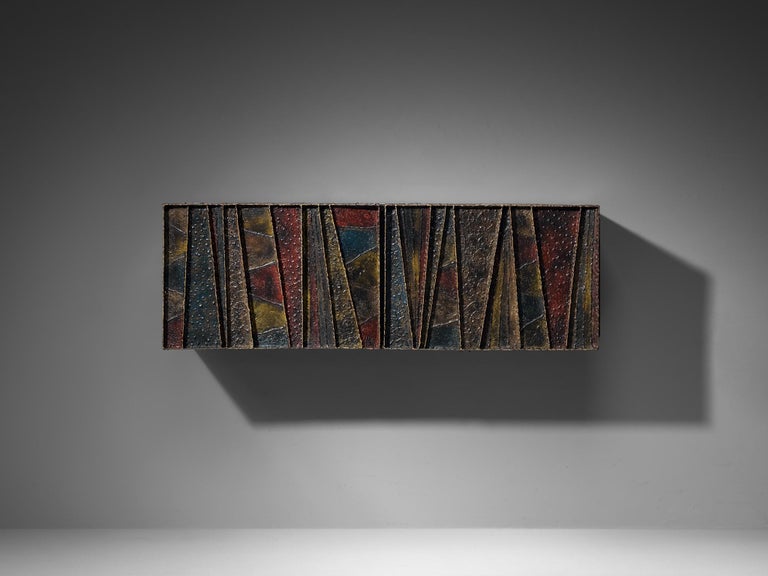
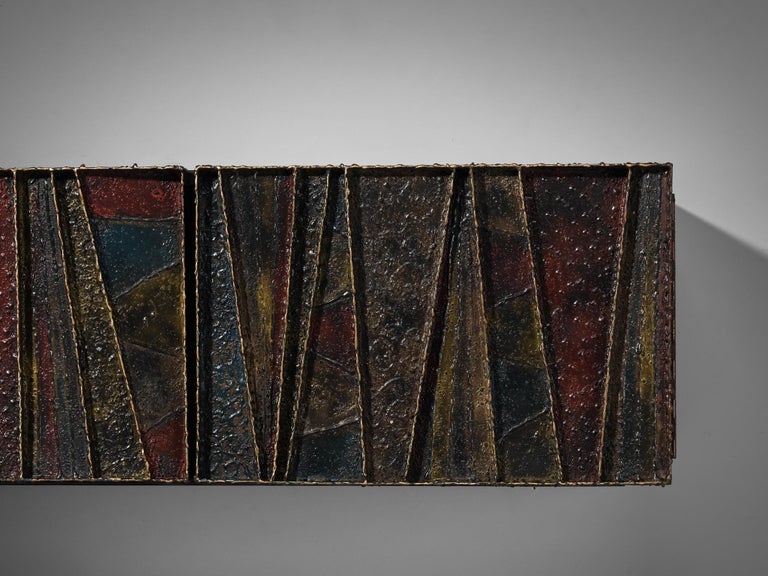
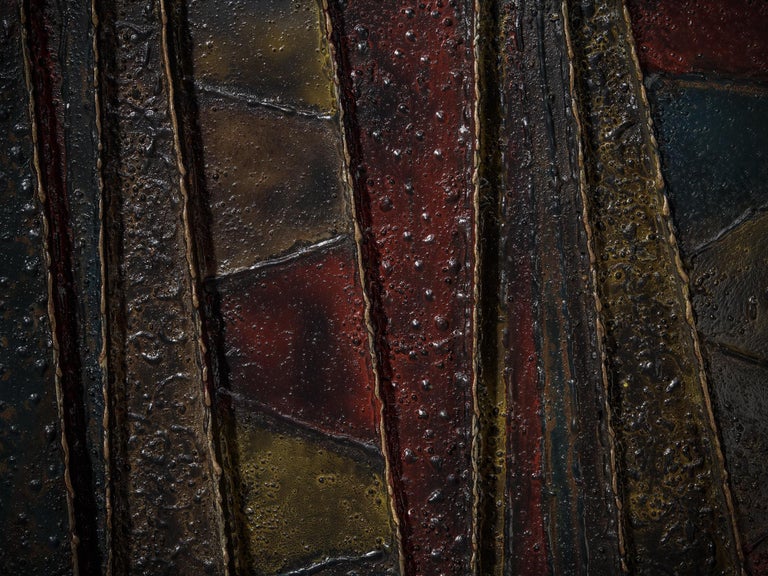
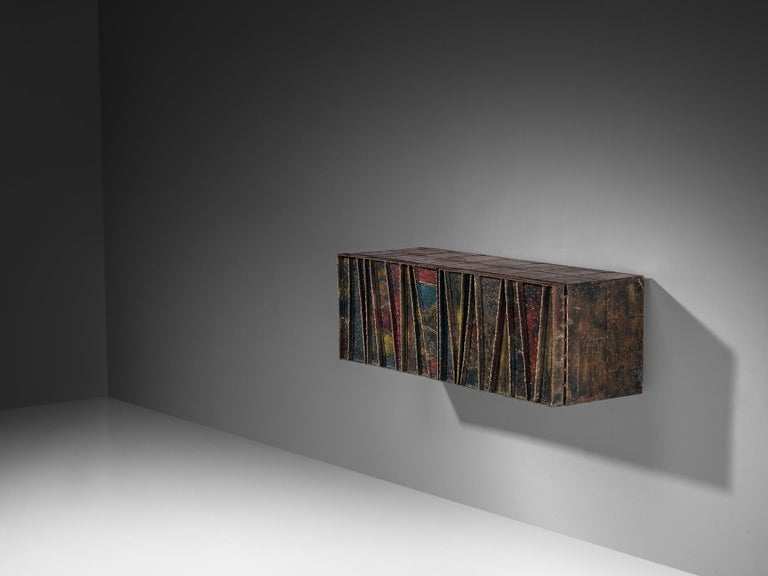
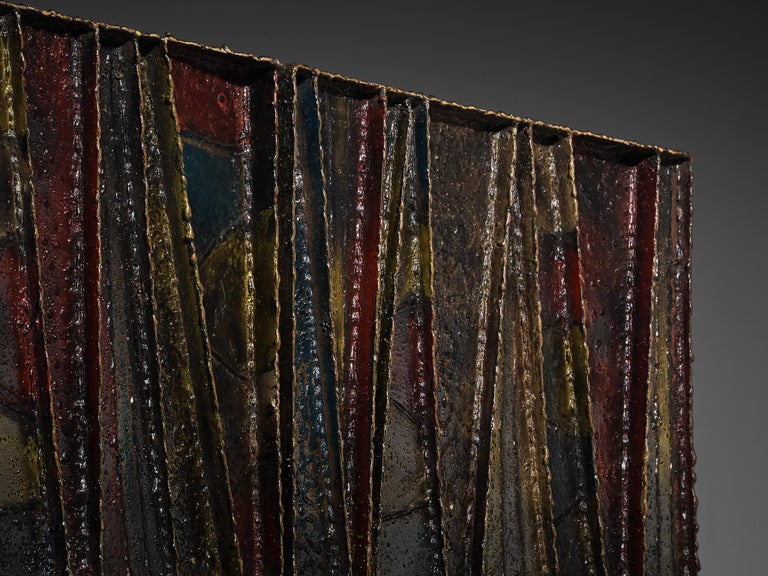
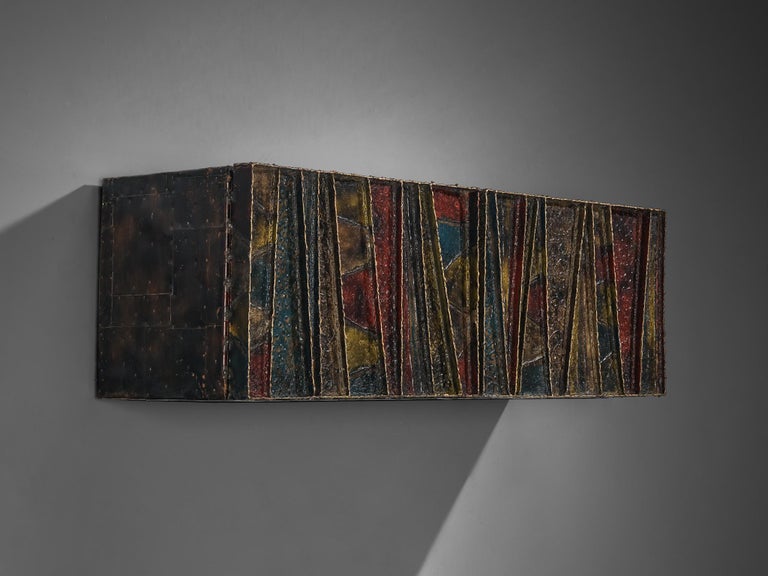
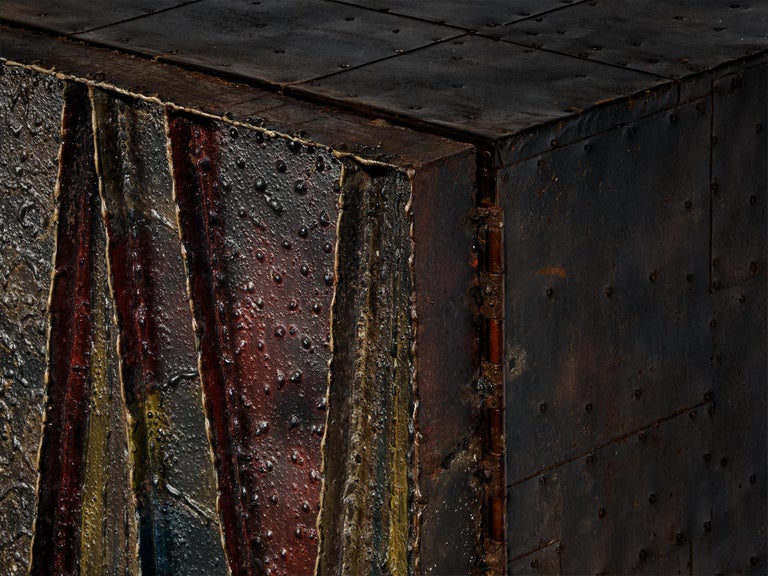
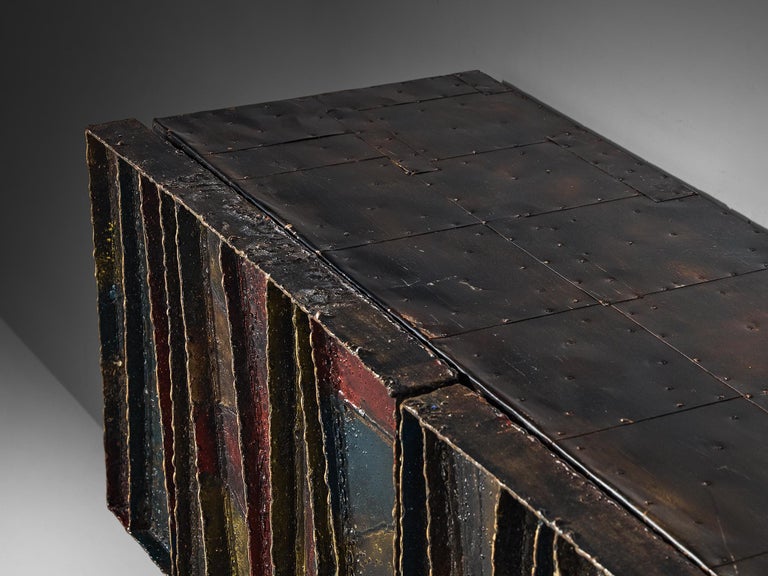
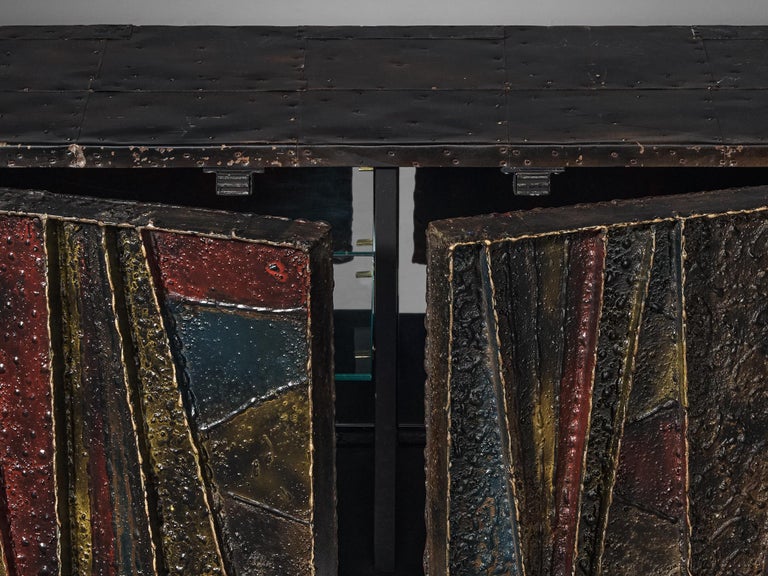
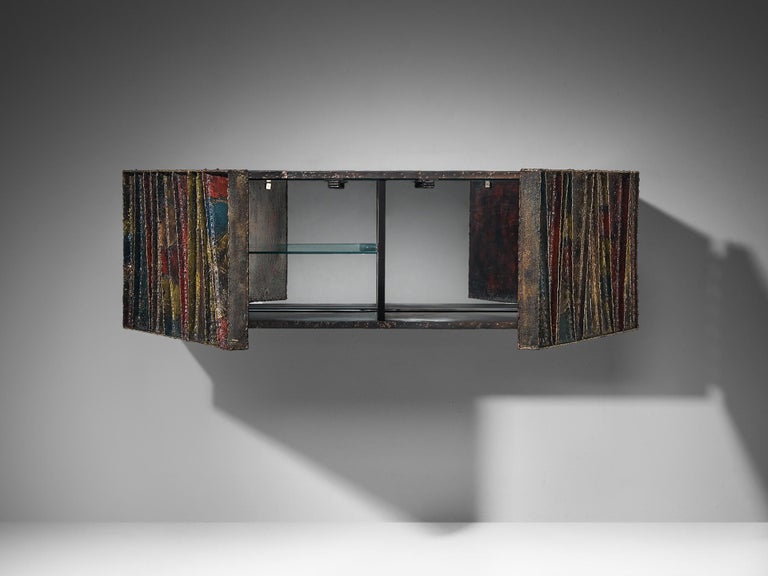
Paul Evans ‘Deep Relief’ Wall-Mounted Sideboard in Welded Steel and Slate
Paul Evans for Directional, 'PE-19' wall-mounted cabinet, welded bronze and steel, painted wood, mirrored glass, glass, United States, 1971
An exceptional design by Paul Evans undeniably breathes artistic excellence combined with impeccable craftsmanship. This piece exemplifies Evans’s idiosyncratic way with welding and constructing. Evans departed from the traditional values of the designer-craftsman, which prioritize respect for materials and functional simplicity. Instead, he showed a keen interest in manipulating materials and creating artificial aging effects. However, he maintained a strong belief in the importance of the craftsman's expertise and ingenuity as the foundation for innovation and replication. The emphasis on surface treatment became the defining characteristic of his furniture designs, of which this cabinet is a prime example. As Evans articulates the essence of his oeuvre, handmade product should bear the mark of the hand. Mere good lines are insufficient, as those can be industrially produced. Furniture ought to embody detail and richness.
The present sideboard features a welded construction in steel with a patchwork surface and cleft slate panels. The doors embrace an asymmetrical layout of geometric hand-forged contours that vary in size, shape, pattern, and color. The front has a rough, uneven textured surface. The diagonal outlined-shapes are defined by an expressively colored polychromed, consisting of the colors red, blue, yellow, gold, brown, and black. This design feature testifies to the postmodern design ideology.
The piece is signed with welded signature, stating "Paul Evans 71 S"
Paul Evans (1931-1987) was among one of the most important American Studio Craft Movement members. Together with artists such as Wharton Esherick and George Nakashima, he helped to make the Philadelphia region a prominent center for the Studio Craft in the late 1960s. Born in Newton, Pennsylvania, Evans studied at a few different institutions such as the Philadelphia Textile Institute, the Rochester Institute of Technology, School for American Craftsman, and the Cranbrook Academy of Art. Eventually, he was drawn to New Hope, Pennsylvania, in 1955 where he collaborated and shared a showroom with Phillip Lloyd Powell until 1966. Powell’s woodwork and Evans's metal craftsmanship combined into a creative partnership. During this period, he started to create furniture with metal and sculpture by which he manipulated materials to achieve expressive surface effects. In 1964, Evans started working for the Directional Furniture company where he pursued a new phase of his career. Directional offered him new opportunities for selling his work throughout the US and he continuously introduced new lines. However, his line proved to be too expensive and by the end of the seventies, he ended his relationship with the company. It was also throughout the seventies that Evans started to replace these crusty, textured surfaced, that were patinated with paint and acid, with dazzling, reflective metal surfaces that were sometimes mixed with woods. Evans’s oeuvre has an impressive size especially when regarding all pieces were handmade. On March 6, 1987, the artist shut down his business and, unfortunately, died the next day due to a heart attack.
VAT within the EU: When buying or delivering an item within the EU, VAT usually applies and will be added.
Choose options











Product Details